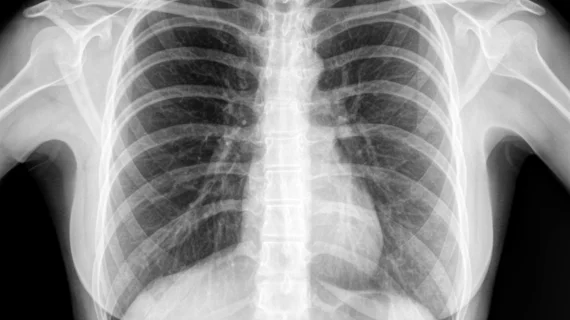Authorities scold provider for failing to relay results from X-ray unearthing deadly lung cancer
Health authorities are criticizing a physician for failing to relay results from a critical X-ray exam unearthing a woman’s metastasized lung cancer that led to her eventual death.
The case dates to February 7, 2020, when an unidentified woman in her 60s visited a general practitioner complaining of a lump on her neck and cough producing phlegm. An ultrasound identified abnormal lymph nodes and providers referred her for a chest X-ray, according to New Zealand’s Health and Disability Commissioner.
She later was admitted to the emergency department on February 26 of the same year, complaining of pain in her back, lower chest and abdomen. She received a second X-ray at the time, interpreted a week later as showing nodules in both lungs. ED providers recommended cross-sectional imaging. But both the medical center and the woman were never alerted about the need for the follow-up, according to the report.
“Several months” later the woman was readmitted to the ED, diagnosed with advanced lung cancer, and she subsequently died.
“While an earlier diagnosis may not have altered the course of the disease, it would have given the woman more time to contribute to a more meaningful management plan of her illness,” Dr. Vanessa Caldwell, deputy commissioner for the government agency, which is tasked with investigating consumer complaints, said in a May 20 news announcement.
The first X-ray on February 10 noted abnormalities and the physician advised the woman to have another chest exam in six weeks, since the neck lump had shrunk and her cough improved. The general practitioner set a task reminder for this repeat imaging, but “did not follow this up,” according to the commissioner. A close friend and caretaker submitted a complaint to the agency in August 2020 leading to the investigation.
In response, the Health & Disability Commissioner is recommending that the general practitioner provide a written apology to the friend, acknowledging the deficiencies in care. Authorities also want the hospital to review its electronic results policy and provide ED staff training on the updated policy. The medical center (Te Whatu Ora) has already made several changes since the event, according to the report. This includes putting in place further safety nets to ensure that follow-ups occur within the recommended timeframe. All staff now have remote access logins and IT support, and there are multiple channels for staff communication, including in-person, Zoom meetings, a group chat and email. Every contact with a patient and recommended treatment must be monitored and addressed, either by sending a reminder to the staff member who added the task, or through a direct follow-up.
“Given an unclear diagnosis following the chest X-ray, the woman should have been seen by a senior clinician,” the report noted. “However, [Deputy Commissioner Caldwell] acknowledged the systemic issues emergency departments face and the steps taken by Te Whatu Ora in the time since to increase staffing ratios of senior medical officers and registered nurses for ED. Te Whatu Ora also continues to recruit radiologists and has increased film reporting capacity.”

